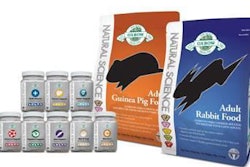The National Advertising Division (NAD) has recommended that Blue Buffalo Company Ltd., manufacturer of BLUE brand petfood products, modify certain advertising claims to avoid disparaging competing petfood makers. The company has said it will appeal some of NAD's findings to the National Advertising Review Board.
The claims at issue appeared in television, Internet, print and mobile advertising and were challenged by Hill's Pet Nutrition Inc., a competing manufacturer of petfood products.
NAD is an investigative unit of the advertising industry's system of self-regulation. It is administered by the Council of Better Business Bureaus.
NAD examined express advertising claims that included:
- "It takes a lot to get me mad, but it really hit me when I realized that his big name dog food had chicken by-product meal as a first ingredient-not real meat. It felt like they fooled me, so I switched Leo to BLUE Buffalo."
- "If you are feeding one of the big-name brands, chances are you're in for a big let-down."
- "Pet parents are learning the truth about the ingredients in some of the leading dog food brands. Don't be fooled by the big name dog food brands."
The advertising at issue depicts a pet owner who appears shocked and disappointed to learn that "big name pet foods" contain chicken by-product meal, leading the pet owner to switch to the BLUE product.
Consumers also are invited to compare their pet's food to BLUE petfood by taking the "True BLUE Test," an online comparison tool that allows consumers to choose one or more petfoods (including Hill's Science Diet products) to compare against BLUE dog and cat food based on five ingredient factors: 1) ALWAYS Has Real Meat as the First Ingredient; 2) ALWAYS Includes Veggies and Fruit; 3) NEVER Has Chicken (or Poultry) By-Product Meals; 4) NEVER Has Artificial Colors, Flavors or Preservatives; and 5) NEVER has Corn, Wheat or Soy.
The challenger argued that all of the challenged advertising conveys the same falsely disparaging and inflammatory message-that "big name" petfood manufacturers, including Hill's, are actively try to conceal the fact that they include chicken by-product meal, instead of meat, as the first ingredient. Further, the challenger contended, the online "True BLUE Test" makes inaccurate, brand-wide comparisons that imply all, or almost all, products from every major competitor contain ingredients such as chicken by-product meal.
The advertiser contended that its market research shows that many pet owners prefer meat as the first ingredient of their petfood and do not want their pet's food to contain any chicken or poultry by-product meals. Further, the advertiser maintained that the surprised and angry reactions of the actors constitute puffery.
NAD has previously held that while companies can and should inform consumers about the composition of their petfood, they may not falsely disparage competing products by communicating unsupported messages that these products are less healthy, less safe or nutritionally inferior. NAD determined that the challenged advertisements reasonably conveyed that leading petfood makers are misleading consumers by actively concealing the content of their products and by positioning their products as high quality when they are not and that consumers should switch to BLUE.
NAD recommended that the advertiser modify the challenged advertisements to avoid any express or implied references to competing manufacturers "fooling" or otherwise misleading consumers because their products include meat or chicken by-product meals. However, NAD noted, the advertiser is free to promote the high-quality ingredients in its products and to encourage consumers to check product labels before making purchasing decisions. NAD further recommended significant modifications to the advertiser's online "True BLUE Test" to assure that comparisons are truthful and accurate, that disclosures are clear, conspicuous and easy to read and assure that checkmarks-signifying positive petfood attributes-are uniform in color to equally highlight the positive attributes of both BLUE and its competitors.
Blue Buffalo, in its advertiser's statement, said the company is "particularly disappointed with NAD's recommendations regarding its long-standing True Blue Test." Nevertheless, the company said, it would make the recommended changes to the test, but will appeal NAD's remaining recommendations to the NARB.















